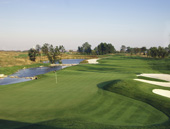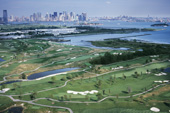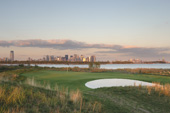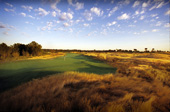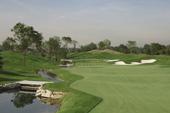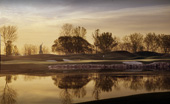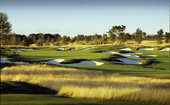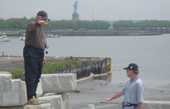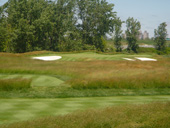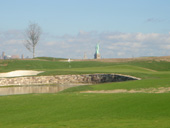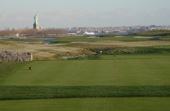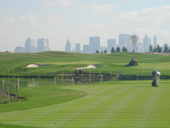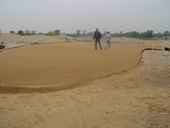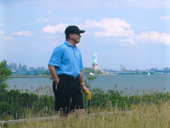
Liberty National
One would never guess from looking at the finished product that Liberty National was once a flat, contaminated piece of land. Photos from the 1930’s show almost the entire property covered with petroleum tanks, which created pockets of contamination throughout the property. As recently as the early 1990’s, there was nothing but dilapidated warehouses and abandoned cars on the site that would become one of the most expensive golf courses ever built.
Upon his first visit to the site Kite commented that he was “under whelmed with the site, but loved the location.” With only two feet of elevation changes, numerous permitting requirements, and limitations due to the environment, Liberty National was going to be difficult. Kite brought in Bob Cupp as co-architect to help with the design and permitting process which was expected to take a couple of years. Little did they know how long the process it would become.
Over 90 different routings and 10 years later, the golf course was finally permitted. By that time, many of the original parties had lost interest or had moved on to other jobs. It was up to Kite and Cupp to resurrect the project by finding a new owner. At that point, Paul Fireman, the Chairman and CEO of Reebok, came to save the day. It took almost two years for Fireman to gain control of the property, but by 2004 the construction was ready to commence.
The building of the course began with a “plastic bag” of sorts covering the entire contaminated area of the property. Then, over three million cubic yards of clay material were added on top. Finally, three to four feet of sand were added over the clay cap. From there, the sculpting could begin. All of the course features had to be above the cap, so there could be no digging at all. Even the lakes and streams are located above the clay cap.
Kite once said, “There is nothing on site that was not manufactured. This is as far away from the minimalist design philosophy as one can get. Architects who pride themselves on only doing minimalist courses would certainly have passed on this wonderful opportunity”. However, the golfers who play it today would never know that it was not always a pristine piece of property as Liberty National now looks like it could be located in the sand hills of North Carolina or the costal dunes of Scotland. The final product establishes a unique blend between traditional golf while utilizing modern agronomic techniques to insure absolutely perfect conditioning.
Liberty National is now located on a rolling piece of property, able to take advantage of one of the most spectacular backdrops in the United States. Not only are there amazing views of the Statue of Liberty, but also the skyline of Manhattan and the Verrazano Narrows Bridge. The golf course includes everything from lakes, to rock lined streams, to great landscaping with over 5,000 planted trees, and course conditioning that would make Augusta National or Muirfield Village jealous. The irrigation system alone is one of the most complex ever designed utilizing over 5,200 sprinkler heads, more than twice the usual number. What catches most people’s attention, aside from the views, is the artful splash-like bunkering that runs right up to the fairways and the tall, fescue grasses that wave like a flags blowing in the wind.
Liberty National has an outstanding practice facility, a world class golf course conveniently located near the greatest city in the world, and amenities above and beyond. One might think that this course is only for the bravest of souls; however, with tees ranging from 5,100 to over 7,400 yards, players of all levels can enjoy their rounds.
Pictures

